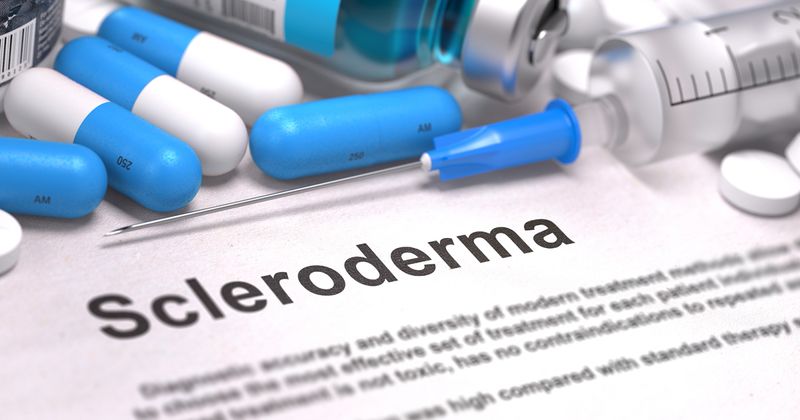'Future therapies' in clinical trials may revise ability to treat systemic sclerosis
Although systemic sclerosis treatments have often been stymied in clinical development, a trio of “interesting future therapies” may offer new options, according to a presenter at the 2020 Congress of Clinical Rheumatology-East.
“There have been a huge number of therapeutic targets — peptide and small molecule mediators, immune cell subpopulations and co-stimulatory mediators, cytokines, integrins — all of which have been tried or are being considered to treat systemic sclerosis in one aspect or another,” Daniel E. Furst, MD, from the department of rheumatology at UCLA Medical Center, told attendees. “There are three interesting future therapies that I would like to talk about today: lenabasum, pirfenidone and romilkimab.”

Furst noted that lenabasum (Corbus Pharmaceuticals), an experimental cannabinoid receptor type 2 (CB2) agonist, has demonstrated interesting potential for patients with systemic sclerosis in early trials.
“CB2 is an anti-inflammatory and anti-fibrotic receptor,” Furst said. “Furthermore, it seems to work at the intersection between the innate and adaptive immune system so that you wouldn’t expect much effect on the innate system, preserving the ability to fight infection, while affecting the adaptive system. Through CB2, you can see that lenabasum decreases inflammation, increases apoptosis of inflammatory cells, increases macrophage clearance, decreases fibrotic growth factors and decreases collagen production — those are all the right things.”

In a 16-week phase 2 trial, lenabasum demonstrated an acceptable safety and tolerability profile at all doses with no “differences between the placebo and lenabasum when you look at treatment-emergent AEs, serious treatment-emergent AEs or severe treatment-emergent AEs, or discontinuation,” Furst said. Additionally, he noted that lenabasum outperformed placebo in the ACR Combined Response Index in diffuse cutaneous Systemic Sclerosis (CRISS) score, reaching 33% at week 16 compared with 0% for placebo.
“Lenabasum went on to a phase 3 study, the results of which were just released in abbreviated form —unfortunately, it did not work,” Furst said. “We will have to learn much more about why this did not work, because, honestly, I would have expected it to.”
Another potential anti-fibrotic contender for systemic sclerosis is pirfenidone (Esbriet, Genentech), Furst noted, citing a 2015 meta-analysis from Aravena and colleagues in PLoS One. The meta-analysis identified that, among patients with idiopathic pulmonary fibrosis (IPF) who received pirfenidone, there was significant decrease in all-cause mortality and IPF-related mortality.
“It really looks as if pirfenidone works in IPF,” Furst said. “In fact, it’s being tested in systemic sclerosis in a double-blind trial where background [mycophenolate mofetil] is used on top of that and pirfenidone or placebo is being given. We certainly are anxious to see the results of that particular trial.”
Rounding out the trio of potential game-changers for systemic sclerosis is romilkimab (Sanofi), an IL-4/IL-13 inhibitor, which represents another viable target for treatment. In a phase 2a randomized, double-blind trial presented at the 2019 American College of Rheumatology annual meeting, patients with diffuse cutaneous systemic sclerosis who received romilkimab showed a statistically significant reduction in mean modified Rodnan Skin Score (mRSS) compared with those receiving placebo.
“I certainly hope that this goes on to a phase 3 trial,” Furst said. “What we have seen is that there are very encouraging trials in lenabasum — although the phase 3 trial is discouraging — pirfenidone and romilkimab, all of which lead me to feel that we are in the middle of a real improvement in the ability to treat systemic sclerosis.”

